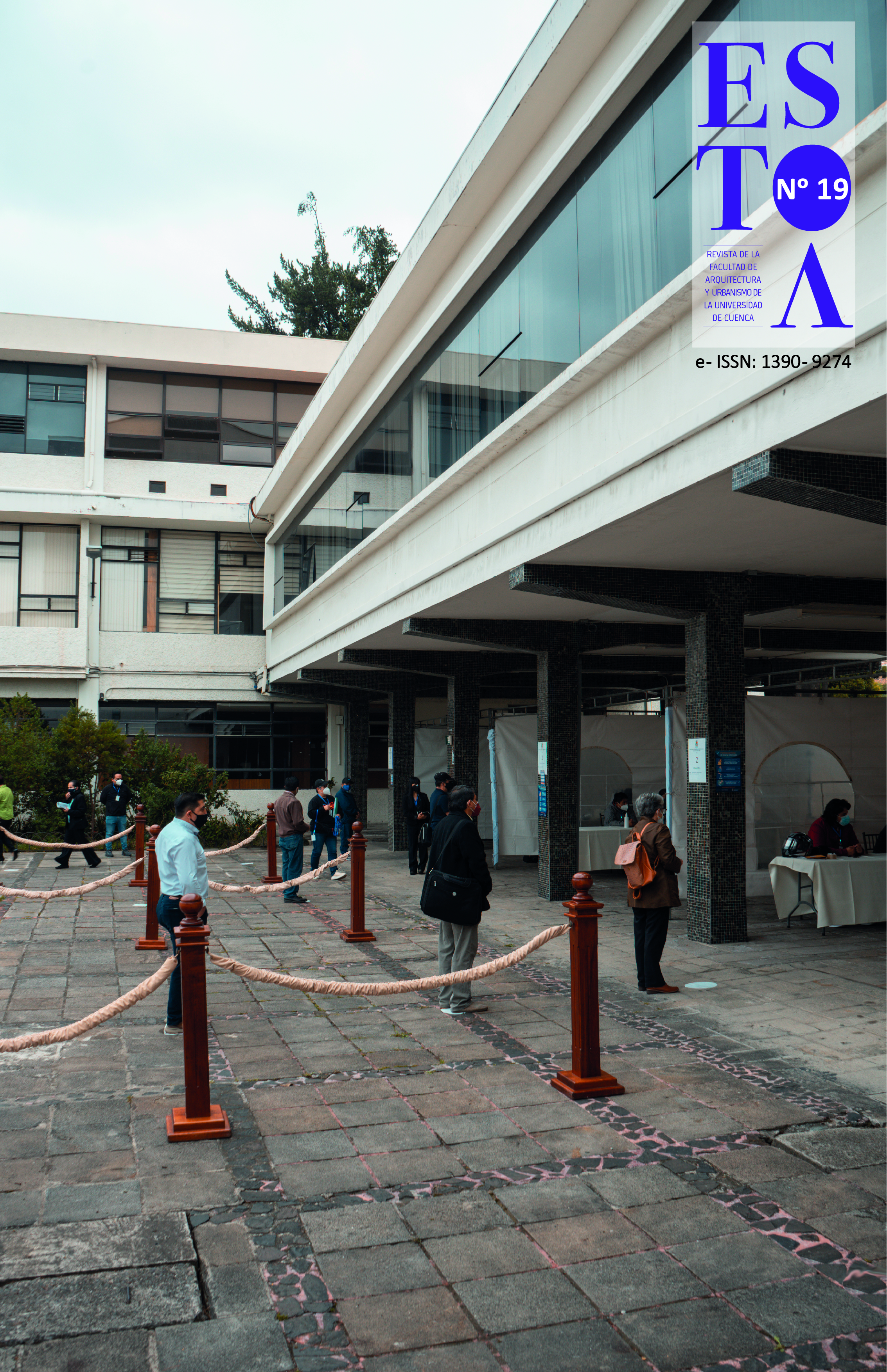Where do we come from and where are we going? A look to project didactics
DOI:
https://doi.org/10.18537/est.v010.n019.a11Keywords:
architecture, creative process, design methodologies, didactics, teaching.Abstract
This paper presents a general state of architecture teaching that, crossed by the most used design methodologies, defines project didactics. It proposes that the pedagogy is constructed at the crossroads of a variety of factors of diverse nature. In the first part, a global perspective of these methodologies is presented from 1962 to 2012, and then it reviews how architecture teaching has been in the Latin American context taking into account various pedagogical experiments carried out during the second half of the last century. Finally, the studio is questioned as the main teaching method of the architectural project, a question that is based on the analysis of social media. In the last part, a series of recommendations and improvement strategies are given, but above all, it invites us to think about how to change the status quo of project teaching.
Downloads
References
Anthony, K. H. (1987). Private Reactions to Public Criticism: Students, Faculty, and Practicing Architects State Their Views on Design Juries in Architectural Education. Journal of Architectural Education, 40(3), 2–11. https://doi.org/10.1080/10464883.1987.10758454
Bamford, G. (2002). From analysis/synthesis to conjecture/analysis: A review of Karl Popper’s influence on design methodology in architecture. Design Studies, 23(3), 245–261. https://doi.org/10.1016/S0142-694X(01)00037-0
Bardí, B., García-Escudero, D., y Labarta, C. (2019). The Learning of Architecture. ZARCH, Journal of Interdisciplinary Studies in Architecture and Urbanism, 1(12), 2–7.
Biggs, J. (2006). Calidad del aprendizaje universitario. Narcea.
Cardona A., J. (2013). Epistemoloía del saber docente. Universidad Nacional a Distancia.
Casakin, H. (2010). Learning Styles and Students’ Performance in Design Problem Solving. Archnet-IJAR - International Journal of Architectural Research, 4(July 2010), 262–277. https://doi.org/10.26687/archnet-ijar.v4i2/3.110
Colomina, B. y Buckley, C. (Eds.) (2011). Clip, Stamp, Fold: The Radical Architecture of Little Magazines 196X to 197X. Actar
Goffi, F. (2019). InterVIEWS: Insights and Introspection on Doctoral Research in Architecture. Routledge.
Goldschmidt, G. (2014). Linkography: unfolding the design process. The MIT Press.
Hassan, D. (2016). Divergent thinking techniques discrepancy and functional creativity. Ain Shams Engineering Journal, 21, 1–15.
Hillier, B., Musgrove, J. y O’Sullivan, P. (1972). Knowledge and design. In Environmental Design: Research and Practice EDRA 3. University of California.
Kuhn, T. (1970). The Structure of Scientific Revolutions: The University of Chicago Press.
Ledewitz, S. (1985). Models of design in studio teaching. Journal of Architectural Education, 38(2), 2–8.
McCay-Peet, L. y Quan-Haase, A. (2017). What is social media and what questions can social media research help us answer? In The SAGE Handbook of Social Media Research Methods (pp. 13–26). SAGE Publications.
Méndez, P. y Barría, H. (2016). Enseñanza de la Arquitectura en América del Sur. Escuelas y Facultades de Arquitectura Públicas de ARQUISUR. Dostercios.
Miles, M., Saldana, J. y Huberman, M. (2014). Qualitative Data Analysis. SAGE Publications.
Palmer, J. (2006). Environmental Education in the 21st Century. Routledge.
Ríos Muñoz, D., Bozzo, N., Marchant Mayol, J. y Fernández, P. (2010). Factores que inciden en el clima de aula universitario. Revista Latinoamericana de Estudios Educativos (México), XL(3–4), 105–126.
Salama, A. M. (2015). Spatial design education: New directions for pedagogy in architecture and beyond. In Spatial Design Education: New Directions for Pedagogy in Architecture and Beyond (Issue March 2015). Routledge.
Saldaña, J. (2009). The Coding Manual for Qualitative Researchers. SAGE Publications.
Schön, D. (1985). The design studio: an exploration of its tradition and potential. RIBA Publications.
Schön, D. (2016). The reflective practitioner: how professionals think in action. Routledge.
Soboleosky, L. (2007). La evaluación en el taller de arquitectura: una mirada exploradora. Nobuko.
Thelwall, M. (2018). Social media analytics for YouTube comments: potential and limitations. International Journal of Social Research Methodology, 21(3), 303–316. https://doi.org/10.1080/13645579.2017.1381821
Trebilcock, M. (2009). Integrated design process: From Analysis/Synthesis to Conjecture/Analysis. PLEA 2009 - Proceedings of the 26th International Conference on Passive and Low Energy Architecture, 559–564. Les Presses de I'Universite Laval.
Webster, H. (2007). The analytics of power: Re-presenting the design jury. Journal of Architectural Education, 60(3), 21–27. https://doi.org/10.1111/j.1531-314X.2007.00092.x
Downloads
Published
Versions
- 2021-06-09 (2)
- 2021-01-27 (1)
How to Cite
Issue
Section
License
Copyright (c) 2021 Estoa. Revista de la Facultad de Arquitectura y Urbanismo

This work is licensed under a Creative Commons Attribution-NonCommercial-ShareAlike 4.0 International License.
The Journal declines any responsibility for possible conflicts derived from the authorship of the works that are published in it.
The University of Cuenca in Ecuador conserves the patrimonial rights (copyright) of the published works and will favor the reuse of the same ones, these can be: copy, use, diffuse, transmit and expose publicly.
Unless otherwise indicated, all contents of the electronic edition are distributed under a Creative Commons Attribution-NonCommercial-ShareAlike 4.0 International License.




